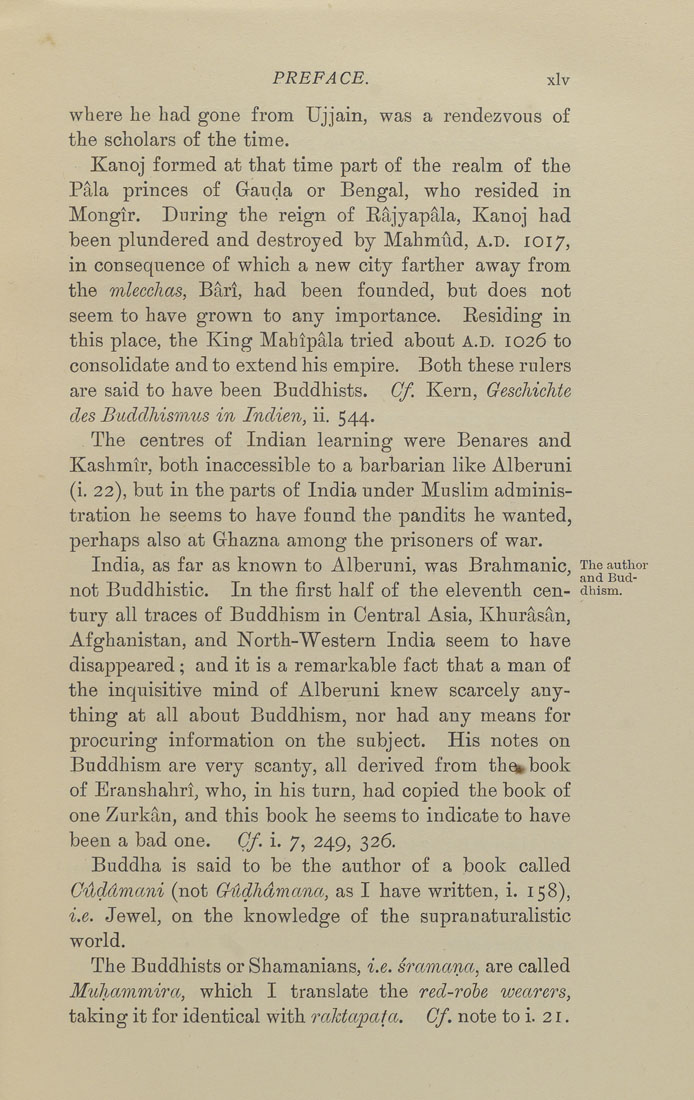PREFACE. xlv
where he had gone from Ujjain, was a rendezvous of
the scholars of the time.
Kanoj formed at that time part of the realm of the
Pala princes of Gauda or Bengal, who resided in
Mongir. During the reign of Eajyapala, Kanoj had
been plundered and destroyed by Mahmud, a.d. 1017,
in consequence of which a new city farther away from
the mlecchas, Bari, had been founded, but does not
seem to have grown to any importance. Eesiding in
this place, the King Mahipala tried about A.D. 1026 to
consolidate and to extend his empire. Both these rulers
are said to have been Buddhists. Cf. Kern, Geschichte
des Buddhismus in Indien, ii. 544.
The centres of Indian learning were Benares and
Kashmir, both inaccessible to a barbarian like Alberuni
(i. 22), but in the parts of India under Muslim adminis¬
tration he seems to have found the pandits he wanted,
perhaps also at Ghazna among the prisoners of war.
India, as far as known to Alberuni, was Brahmanic, The author
not Buddhistic. In the first half of the eleventh cen- dhism.
tury all traces of Buddhism in Central Asia, Khurasan,
Afghanistan, and North-Western India seem to have
disappeared; and it is a remarkable fact that a man of
the inquisitive mind of Alberuni knew scarcely any¬
thing at all about Buddhism, nor had any means for
procuring information on the subject. His notes on
Buddhism are very scanty, all derived from thewbook
of Eranshahri, who, in his turn, had copied the book of
one Zurkan, and this book he seems to indicate to have
been a bad one. Cf. i. 7, 249, 326.
Buddha is said to be the author of a book called
Cilddmani (not Gildhdmccna, as I have written, i. 158),
i.e. Jewel, on the knowledge of the supranaturalistic
world.
The Buddhists or Shamanians, i.e. sramana, are called
Muliammira, which I translate the red-rohe wearers,
taking it for identical with raktapata. Cf. note to i. 21.
|








